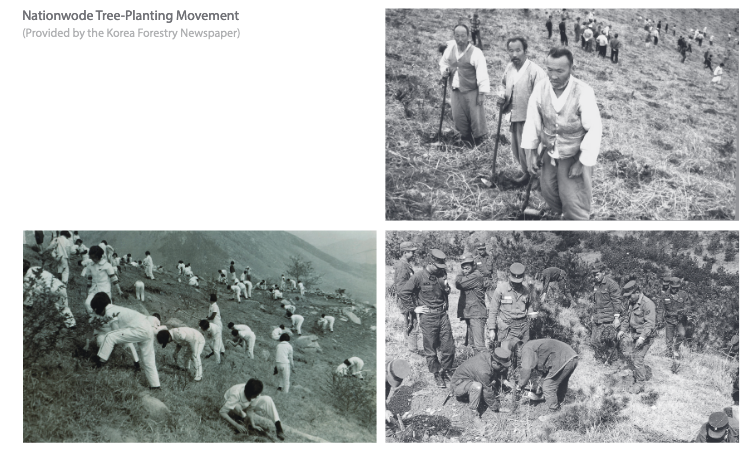The South Korean tree-planting ‘miracle’
As a result of the recognition of the role of trees in controlling climate change, at the recent COP27 more than 25 countries agreed to hold each other accountable for a pledge to end deforestation by 2030. The talk was not just about ‘net-zero’ but about ‘nature-positive’.But arresting deforestation must also be matched by ambitious global programmes of reforestation. One of the most inspiring, and also least known, took place here in the Republic of Korea. As in many other places, the degradation of forests on the Korean peninsula was already a problem as long ago as the eighteenth century, but it had reached crisis proportions by the period of Japanese colonization (1910 – 1945). The Korean War (1950 – 1953) destroyed almost half of the remaining forested land, and by the 1960s deforestation had become a serious problem, not just in relation a lack of lumber and firewood but because the erosion control provided by trees had also been destroyed, and heavy rainfalls during the summer monsoon season regularly caused major damage.Regions of South Korea before the reforestation campaign.
From 1962-1987 the Republic of Korea’s National Reforestation Programme was responsible for remedying this dire situation through organizing the systematic planting of huge numbers of seedlings sourced from government-owned nurseries, forest co-ops, and locally grown in villages. My wife, Eungbok, tells me that every year in springtime during her high school years she would head for the hills with her classmates on designated tree planting duties. The results are plain to see by looking at photographs of the same landscape as it was prior to the Programme and then today. South Korea is a reforestation success story. Before and after.
This means, however, there are almost no old-growth forests in Korea. All the species of tree around where we live are no more than about forty of fifty years old. Also, the reforestation campaign made some mistakes: it relied too heavily on planting rapidly growing coniferous trees, and reliance on a limited number of tree species made the new forests susceptible to pests and disease, something that subsequent global reforestation programmes have learned from. And unfortunately, despite this amazing feat of forestation South Korea remains a major importer of timber, including from countries most heavily implicated in illegal logging.NOTESFor today’s post I referred to Lessons learned from the Republic of Korea’s National Reforestation Programme, published by the Korea Forest Service. https://www.cbd.int/ecorestoration/doc/Korean-Study_Final-Version-20150106.pdf. The images accompanying this post are from this source.


